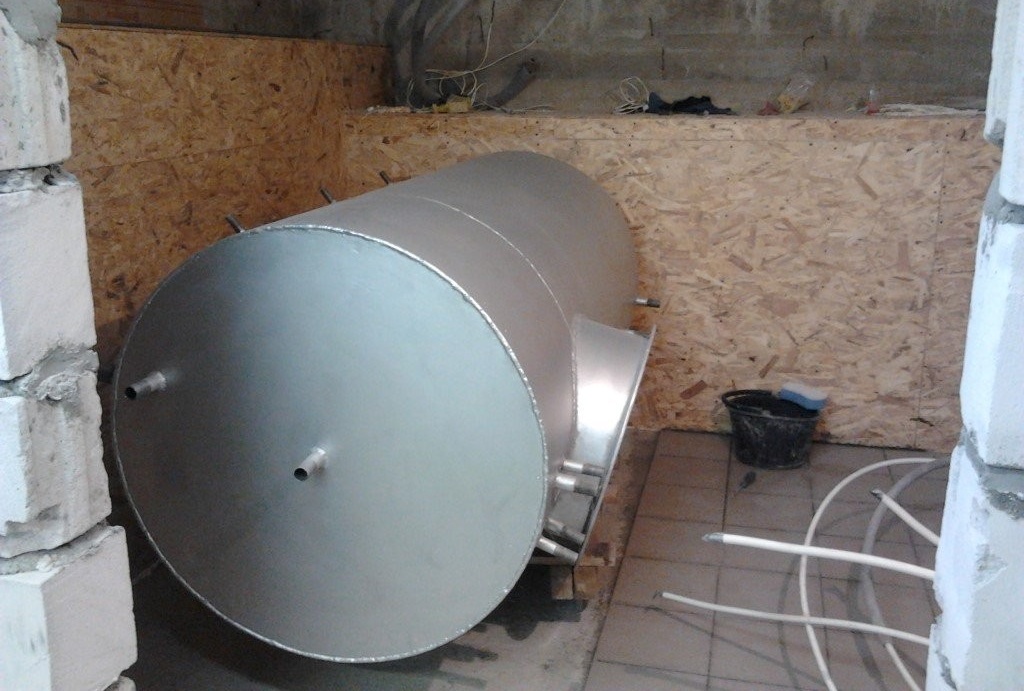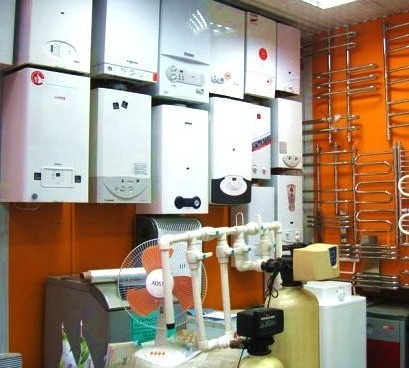The heat accumulator for heating boilers: device, types, connection principles
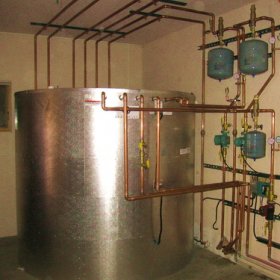
Solid fuel boilers are used to heat suburban facilities if other types of fuel are unavailable or unreasonably expensive. For each heating season, the owner of the cottage has to harvest the necessary supply of firewood and coal, the volume of which depends on the area of the object and the quality of its thermal insulation, as well as the severity of climatic conditions in the region of residence.
Most models of solid fuel boilers can provide a comfortable temperature in the house if they are heated twice a day at a strictly defined time. If you move the time of ignition of fuel in the combustion chamber of the unit, it becomes cold in the living room. An exception is long-burning boilers, which can maintain the required temperature in the house for several days. You can achieve the same result from a conventional solid fuel boiler, if you include an additional unit in the heating system that can accumulate the excess heat generated by the unit when burning a portion of the fuel. These nodes include buffer tanks or heat accumulators, which are also called storage devices.
Installing a heat accumulator allows you to:
- arrange boiler service at a convenient time of the day;
- increase the time between regular fuel downloads without lowering the comfort of living in the house;
- to optimize the cost of maintaining the house by reducing the purchase of solid fuel.
The use of solid fuel boilers in conjunction with buffer tanks can reduce the cost of solid fuel at times, while ensuring the required level of comfort in the home. The return on the installation of the storage tank can be significantly increased if intelligent regulators and sensors are used in the operation of the heating system. When the indoor temperature reaches the set temperature values, the flow of coolant to the heating devices stops.
Read about how the solid fuel boiler works and how it works in our next article:https://aquatech.tomathouse.com/en/otoplenie/kotly/kotly-otopleniya-na-tverdom-toplive.html.
The heat generated by the boiler continuing to work is accumulated in the buffer tank, and then is given to the cooled coolant, which begins to circulate through the system, bypassing the burned-out boiler. The larger the volume of the buffer capacity, the longer the house will be heated due to the thermal energy accumulated in it.
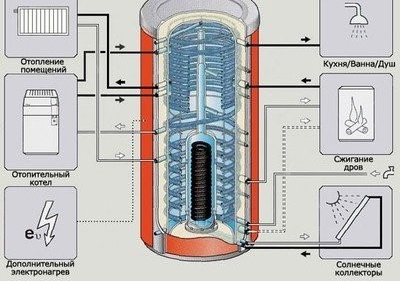
Advantages of using a thermal storage tank in a heating system of a country house connected to several heat generators
Content
How is the heat accumulator arranged?
The buffer tank is usually made in the form of a cylinder of sheet steel (black or stainless).The volume of the heat storage tank can vary from hundreds to several thousand liters. The larger the capacity, the larger its dimensions. Due to the impressive linear dimensions of the storage tanks, difficulties arise with their placement in the boiler rooms. Manufacturers of ready-made heat accumulators produce models both with thermal insulation, supplied in separate packaging, and without it. The thickness of the insulation layer is usually 10 cm, which must be taken into account when installing the equipment. A casing sewn from a quality skin substitute is put on the tank with insulation. The heater slows down the cooling of the coolant in the heat storage tank.
Depending on the design, buffer tanks are:
- empty (without heat exchangers);
- with one or two coils (heat exchangers);
- with built-in smaller diameter boiler tanks used to ensure autonomous operation of the hot water supply system of a country facility.
The steel casing of the tank provides several threaded holes that are used to connect the storage device to the boiler and pipe wiring of the home heating system.
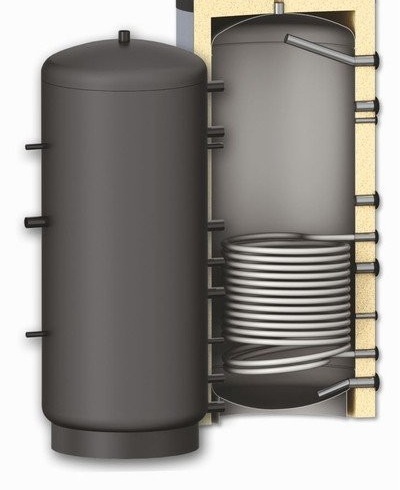
Appearance and internal structure of the thermal accumulator (buffer capacity) with a lower heat exchanger and a layer of mineral wool insulation
How fast are energy supplies used up?
It is impossible to give a definite answer to this question. The duration of the heating system of the facility due to the energy stored in the buffer tank depends on:
- from the tank volume;
- the volume of heat loss in the room;
- from outdoor temperature and time of year;
- from the set values of temperature sensors.
Heating a country house with the passive participation of boiler equipment can be carried out from several hours to several days. While the heat accumulator is working, the boiler is “resting”, which means it retains its resource, which will last for more heating seasons.
How to choose the right model?
When choosing a model of a suitable buffer tank for heating a suburban object, they proceed from the capacity of the heating boiler. Online calculators have been developed that allow interactively determining the volume of the storage tank depending on the power of the solid fuel boiler and the time it takes the unit to heat the coolant in the buffer tank. You can use ready-made tables containing recommendations on the volume of storage tanks for specific models of solid fuel boilers.
When choosing a model of a thermal accumulator, it is important to take into account its dimensions. Experts recommend installing buffer tanks in the immediate vicinity of the heating boiler. When using circulation pumps in the heating system, storage tanks can be located in the house, garage, utility rooms.
How does the heat accumulator work while in the system?
A circulation pump embedded in a section of the pipeline connecting the heating boiler to the buffer tank ensures the supply of heated water to the upper part of the heat accumulator. In this case, the cold coolant is ejected from the lower part along the return to the heating boiler.
The second circulation pump, installed between the buffer tank and the radiators, provides the supply of hot coolant through the pipe wiring until the thermostat shuts it off due to the achievement of the set air temperature in the room.
When the heating devices cool down, the house will become colder, the sensors will work, and the pump will again begin to supply the heated coolant to the piping of the heating system. Thermal energy will be accumulated during periods of inactivity of the second circulation pump.
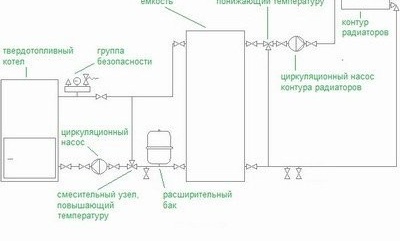
Scheme of connecting the thermal accumulator to the heating system of a suburban facility, heated offline using a solid fuel boiler
If the heat accumulator is not used, then the entire heat carrier goes into the system and the house overheats. Excessive heat is removed from the rooms through open windows and windows. "Drowning the street", throwing money away, is currently impermissible luxury and even criminal wastefulness.
After burning all the fuel in the boiler furnace, the equipment is turned off. The first circulation pump stops its work, and the second continues to function, providing the supply of hot coolant stored in tanks to the piping and radiator wiring of the heating system. The cooled coolant returns back to the thermal accumulator, which each time lowers the temperature of the water in the thermos tank.
You will learn about what fuel is best used for heating a house and how to properly heat a stove in our next article:https://aquatech.tomathouse.com/en/otoplenie/topim-pech-pravilno.html.
What else can be connected except for the boiler?
In addition to boiler equipment, alternative heat sources can be connected to the heat storage tank (solar collector, fireplace insert, etc.). The presence of such sources will allow not to heat the boiler at all in the summertime, since the heat energy supplied by them will be enough to heat hot water for the domestic hot water system.
The disadvantages of using ready-made buffer tanks are their high cost and large size. Costs pay off depending on the volume of the heat accumulator for several years. If desired, the storage tank can be made with your own hands. This video shows an example of a similar project.
